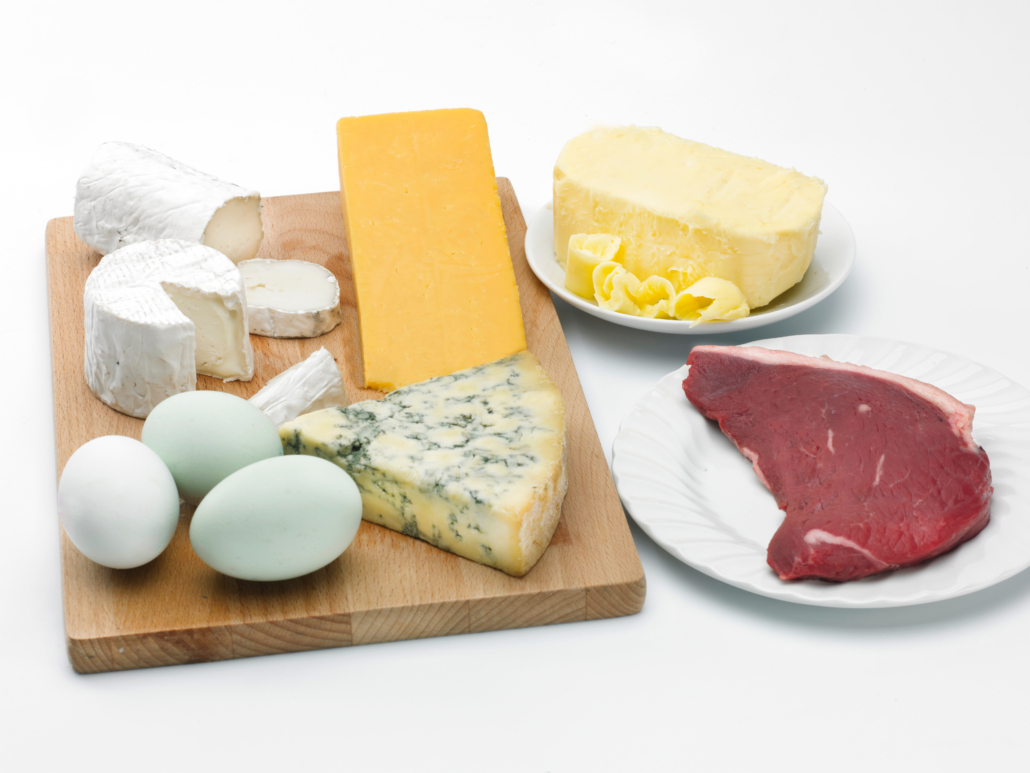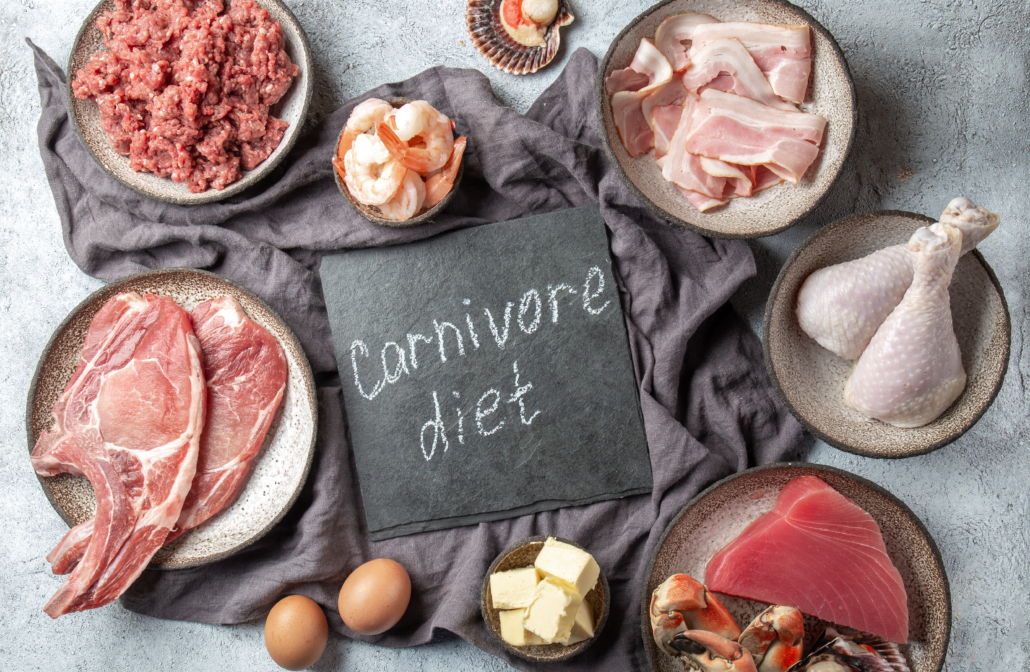We include products in articles we think are useful for our readers. If you buy products or services through links on our website, we may earn a small commission.
The AIP (Autoimmune Protocol) Diet: How to, Benefits, and Tips

The Autoimmune Protocol (AIP) diet is aimed at identifying inflammatory foods that trigger autoimmune disorders.
The growing popularity of AIP makes sense when considering that according to the World Health Organization, diseases associated with chronic inflammation kill 3 out of 5 people worldwide.
Though there are variations on the Autoimmune Protocol diet, they all resemble restrictive variations on the paleo diet. In practice, the AIP looks like eliminating most agricultural and industrial foods and focusing on nutrient-dense whole foods.
Once the inflammatory foods are identified, AIP allows for reintroducing other previously eliminated foods.
In this article, we will provide an overview of the AIP, the science-backed rationale for eliminating certain foods, and tips for creating the most effective AIP diet.
Table of Contents
What is the AIP (Autoimmune Protocol) Diet
The AIP diet targets the link between diet and inflammation.
Chronic inflammation and inflammatory diseases are alternative terms for autoimmune disorders.
Inflammation is a natural immune process that the body activates to fight infection and heal wounds.
But when inflammatory responses are chronically triggered by dietary and lifestyle stressors, our inflammation response isn’t able to turn off. The body is stuck in a state of perpetually overproducing antibodies that damage healthy cells, tissues, and organs.
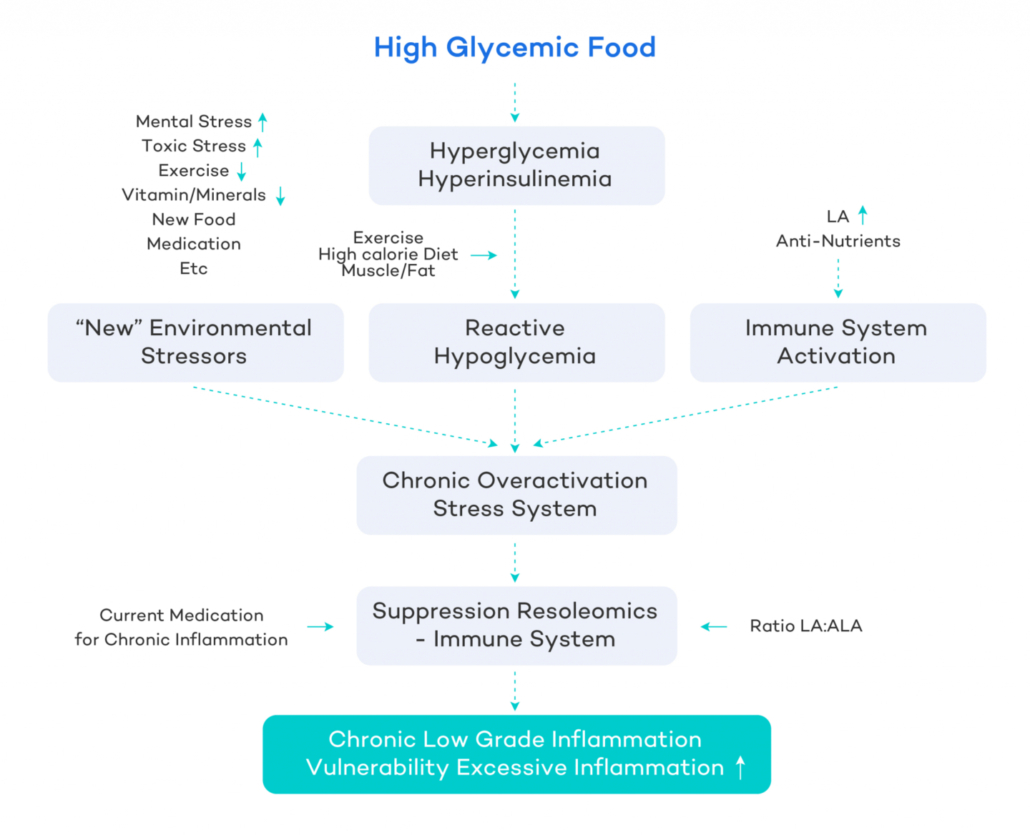
The AIP diet acknowledges that our inflammatory response system evolved over eons during which humans lived as hunter-gatherers consuming only wild, nutrient-dense whole foods.
During this nearly two million-year-long period, our ancestors did not consume the agricultural and industrial products that account for the bulk of the standard Western diet. These include
- grains
- Most fruits
- added sugars
- industrial seed oils (marketed as healthy “vegetable oils)
- plant foods containing naturally occurring pesticides and antinutrients
In short, our bodies were not designed for our modern diets, and the AIP is an approach to reclaiming health by consuming more ancestrally aligned foods.
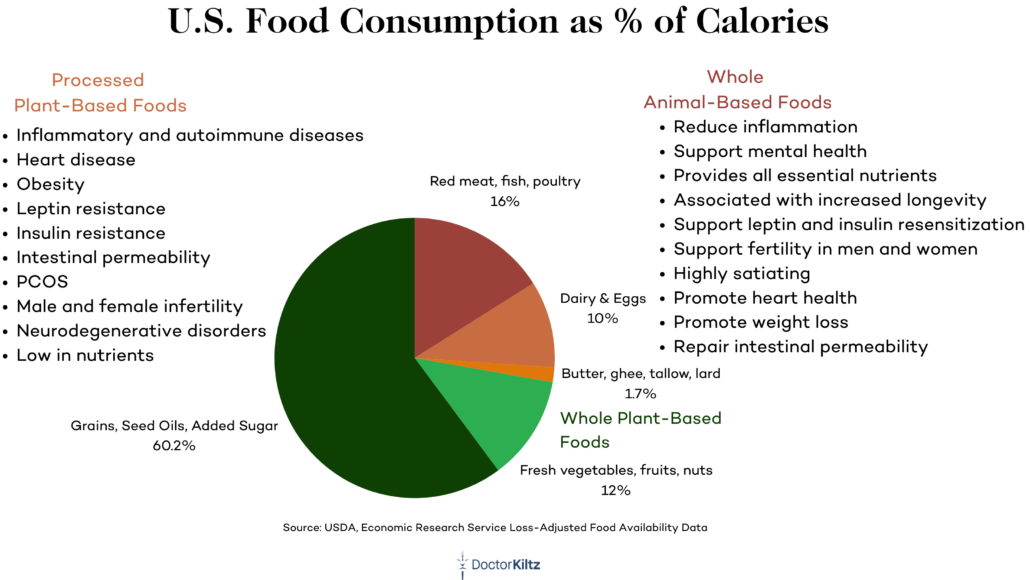
However, one’s propensity for acquiring autoimmune disorders also depends on genetics, stress, medication use, and other lifestyle factors like physical activities, sedentariness, drug and alcohol use, and smoking, among others.
The AIP Diet Targets Gut Health
One of the key ways that these foods are believed to cause inflammtion is by attacking the gut lining, resulting in intestinal permeability.
Excess fiber, carbohydrates, and common plant toxins like lectins, gluten, and phytic acid degrade the delicate mucosal lining of the intestines and degrade the proteins that bind the intestinal cells together.
When this happens, toxic compounds can enter the bloodstream, where they get circulated around the body and deposited into various tissues and organs. The body rightly identifies these substances as threats and attacks them when inflammation.
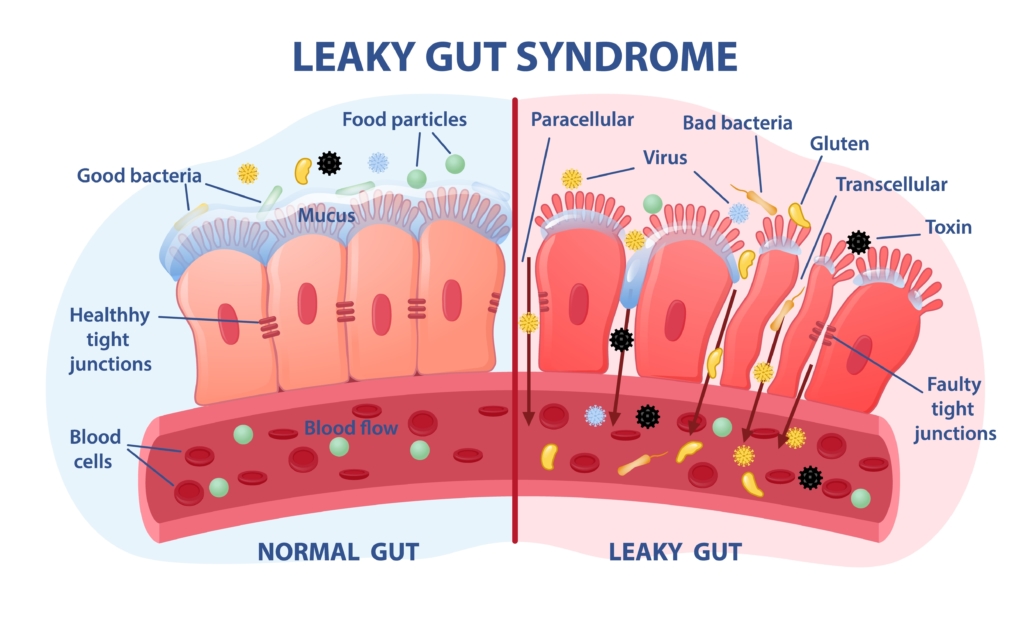
The AIP diet eliminates foods associated with inflammation and intestinal permeability and replaces them with gut-healing nutrient-dense whole foods.
Common Autoimmune Disorders Targeted by the AIP Diet
Common autoimmune disorders addressed by the AIP diet include
- Rheumatoid arthritis
- Lupus
- Inflammatory bowel disease (IBS) and Ulcerative Colitis (UC)
- Chron’s disease
- multiple sclerosis
- Heart disease
- PCOS
- Type 1 and Diabetes
- Various cancers
- Psoriasis
- Eczema, acne, rosacea
Common signs of inflammatory autoimmune disorders include
- Joint stiffness
- Pain
- Rashes
- Fatigue
- Brain fog
- Low mood/depression
- Anxiety
- Digestive problems–bloating, diarrhea, bloody stool, etc.
How Do You Do the AIP Diet?
The AIP is often viewed as an extension of the paleo diet. It calls for dramatically eliminating foods developed and produced by industrial agriculture.
The majority of your calories will come from fresh meats supplemented with vegetables and fruits.
Doing the AIP diet entails two phases: (1) elimination and (2) reintroduction.
However, many people find that it is beneficial to maintain the elimination of unnecessary foods even if they are not identified as directly impacting symptoms.
Phase 1: Elimination
During the elimination phase, you get rid of all potentially inflammatory foods, medications, and substances.
These items are targeted for their various effects on the gut lining, intestinal bacteria, and known immune responses.
This phase generally lasts between 30-90 days, or as long as it takes to notice a significant reduction of symptoms.
Phase 2: Reintroduction
Reintroduction begins after a significant improvement is measured and stabilized.
The previously eliminated foods are brought back one at a time, with special attention paid to the body’s response. Each reintroduction should last 5-7 days before moving on to the next food.
The idea is that after the reintroduction phase, a person can consume the widest variety of food without re-triggering their autoimmune condition.
This sounds good in theory, but a major drawback to the reintroduction phase is that autoimmune triggering intolerances to food is generally a cumulative and collective process.
High-carb foods, refined grains, insoluble fiber, plant toxins, and vegetable oils all work synergistically to promote systemic inflammation that shows up as specific autoimmune conditions.
The focus on allowing the greatest variety of foods at the expense of the ongoing elimination of potentially triggering foods is misguided and based on a false idea that the human diet must contain a wide variety of foods.
If you are serious about reducing autoimmune disorders, it is likely important to eliminate inflammatory foods for the long haul.
Some foods that you’re better off not reintroducing
- Processed foods like chips, fast food, and most prepared foods that come pre-packaged
- Anything containing seed “vegetable” oil–corn, soy, canola, rapeseed, etc.
- Any food with added sugar
- Baked goods made with wheat and other refined grains
- Junk food, soda, candy
If you do choose to reintroduce some foods, make sure to do it under conditions that are not associated with inflammation. For example, don’t reintroduce after not sleeping well, when sick or healing from infections, following an intense workout, or when more emotionally stressed than usual.
Order of reintroduction can also be a factor with dairy. Begin with the lowest lactose foods like ghee and fermented dairy like cheese and yogurt.
Foods to Avoid on the AIP Diet
Though the AIP diet varies widely, the following foods are generally targeted and avoided.
Grains
All grains, whether whole or processed, are high-carb foods. When carbohydrates bind to proteins and cells in the body, they create AGEs–toxic compounds that have been shown to stoke inflammation and oxidative stress.
Other studies have found that most grains contain naturally occurring pesticides or plant toxins like oxalates, lectins, and amylase/trypsin inhibitors (ATIs) that cause inflammation, even in people without wheat sensitivities.
Grains eliminated by AIP include wheat, oats, barley, rice, rye, pseudo-grains like spelt and quinoa, and all grain-based foods like bread, pasta, and cereal.
Legumes
Legumes are high in naturally occurring plant toxins, including lectins, phytates, saponins, and other compounds that can damage the intestinal lining and inhibit nutrient absorption.
Common grains include (but are not limited to) peas, beans, lentils, and peanuts, along with legume-based foods like tofu, tempeh, peanut butter, and fake meats.
Nightshade vegetables
Nightshades contain compounds called glycoalkaloids that can cause inflammation.
Common nightshades include potatoes, tomatoes, eggplants, peppers, and tomatillos, among others.
Eggs
Eggs on their own do not cause inflammation. However, other inflammatory factors like excessive emotional stress, microbial imbalances and overgrowth in the intestines, inflammatory digestive issues, and certain medications can become sensitive to proteins in eggs and egg whites.
Because eggs are extremely nutritious and not the cause of allergies, they are usually reintroduced first.
Dairy
Dairy allergies, like egg allergies, are usually the result of damage to your small intestine due to plant toxins and processed foods, not from the milk itself.
When your digestive system is damaged and already inflamed, your immune system is more likely to identify certain milk proteins as harmful. This triggers your body to produce immunoglobulin E (IgE) antibodies to attack the dairy protein.
Dairy including but is not limited to, milk from cows, goats, sheep, and buffalo, and all foods derived from these milks like cheese, butter, ghee, cream, and protein powders.
Since dairy, especially cultured as cheese and as high-fat substances like butter and ghee, are highly nutritious, these foods are among the first to be re-introduced.
A2 dairy from A2 cows and naturally from goats is likely less inflammatory than regular A1 milk.
Nuts and Seeds
Nuts contain various plant toxins and antinutrients. They’re also high in omega-6 fatty acids, which have been associated with inflammation when not balanced by omega-3 fatty acids.
The AIP eliminates all nuts, seeds, flours, butters, and oils made from nuts. These include cocoa and spices made from seeds like cumin, fennel, coriander, mustard, fenugreek, and nutmeg.
Alcohol and Coffee
Alcohol in all forms, is an inflammatory toxin and has been directly linked to intestinal inflammation.
Coffee is often high in toxic molds called mycotoxins.
If you simply can’t do without your cup of Joe, choose certified mycotoxin-free brands.
Seed “Vegetable” Oils
Vegetable oils are highly processed industrial products linked to inflammation and numerous inflammatory diseases and disorders.
Authors of a large 2018 study looking at the health effects of consuming vegetable “seed” oils concluded, “In summary, numerous lines of evidence show that the omega-6 polyunsaturated fat linoleic acid promotes oxidative stress, oxidized LDL, chronic low-grade inflammation and atherosclerosis, and is likely a major dietary culprit for causing CHD [congenital heart disease], especially when consumed in the form of industrial seed oils commonly referred to as ‘vegetable oils’ ”
Common vegetable oils to eliminate and NEVER reintroduce include
- Canola
- Rapeseed
- Corn
- Cottonseed
- palm kernel
- Safflower
- Soybean
- sunflower oils
Refined Sugars
Added sugars have been associated with inflammation and various inflammatory diseases. Sugar causes inflammation via various mechanisms, including
- Binding to cells, DNA, RNA, and proteins in the process called glycation
- Damaging the glycocalyx–a delicate protective membrane coating every cell in the body and regulating important functions, including cardiovascular health and immune system response
- Promoting harmful bacteria and reducing protective bacteria in the gut leads to intestinal permeability
- Increasing “bad” LDL cholesterol
Sugars to eliminate include
- cane or beet sugar
- corn syrup
- brown rice syrup
- barley malt syrup
- All processed sweets, drinks, and foods with added sugars
Additives and Sweeteners
AIP eliminates all industrial food additives, including all artificial sweeteners like xylitol and stevia, along with all food colorings, thickeners, and emulsifiers.
Fresh and Dried Fruit
Many AIP approaches, but not all, cut out dried fruit and/or fresh fruit.
Less restrictive protocols allow between 10–40 grams of fructose from fresh fruit per day.
Algae
Algae is another gray area–some AIP diets allow it, others cut it, citing studies linking it to possible immune responses.
Certain Medications
NSAIDs like ibuprofen, diclofenac, naproxen, and high dose aspirin are all eliminated on the AIP diet.
Foods to Enjoy on the AIP
Fresh Meat
Most AIP protocols center on fresh meat, especially from pastured and grass-fed sources.
Meat is the most nutrient-dense food on earth, meaning it provides the most nutrients per weight.
Studies show that humans evolved on a hypercarnivorous diet for nearly 2 million years before the dawn of agriculture, only 10,000 years ago.
Meat provides nutrients that we cannot get from any other source in any significance, and when raised well, is free from all irritating and toxic compounds.
Red ruminant meats like beef, lamb, bison, wild seafood, and organ meats like liver are the best options.
Additional foods that you can eat on the AIP diet include
- Bone broth: Glycine and arginine, two of the amino acids found in abundance in beef bone broth, have powerful anti-inflammatory properties
- Tubers like sweet potatoes, yams, taro
- Non-dairy fermented foods like sauerkraut
- Olive oil (some versions allow coconut oil)
- Herbs and spices not derived from seeds or chilies
- Moderate use of maple syrup and raw honey (some protocols eliminate these entirely)
- Vinegars without added sugar
- Green and black tea in moderation
- Vegetables other than nightshades. Some protocols eliminate most vegetables, or allow for only low-toxin veggies like zucchini and asparagus ).
Research on the Effectiveness of the AIP Diet
Research on the AIP is in its infancy, but the studies so far are promising.
In a small 2019 study, 16 women with an autoimmune disease called Hashimoto’s thyroiditis followed the AIP diet for ten weeks.
At the conclusion of the study, inflammation was decreased by an average of 29%, and symptoms of the disease were reduced by 68%.
Participant quality of life also increased significantly even though their thyroid function showed no measurable differences.
A 2017 study of 15 people with IBD, found that participants concluded the 11-week study with far fewer IBD symptoms but no measurable reduction in inflammation.
A similar 2019 study found that people with IBD reported significant improvements in quality of life measures like playing sports and leisure activities.
The most dramatic results of what can be considered an extreme version of the AIP diet, known as the carnivore diet came out of Harvard University.
2029 people who had been practicing a strictly all-meat diet for at least six months found that
- 93% improved or resolved obesity and excess weight
- 93% improved hypertension
- 98% improved conditions related to diabetes
- 97% improved gastrointestinal symptoms
- 96% improved psychiatric symptoms
The AIP (Autoimmune Protocol Diet): The Takeaway
The AIP diet aims to reduce chronic inflammation–the root of numerous autoimmune disorders.
The global epidemic of autoimmune diseases is linked to modern diets and sedentary lifestyles. The AIP diet eliminates potentially inflammatory foods–all of which were introduced to the human diet after agriculture was invented only 10,000 years ago.
Foods like added sugars, vegetable oils, grains, legumes, many vegetables, and fruits are believed to damage the intestines and spread inflammatory antigens throughout the body.
The AIP centers around non-inflammatory whole foods, especially fresh meats that provide an abundance of nutrients without potentially harmful compounds.











